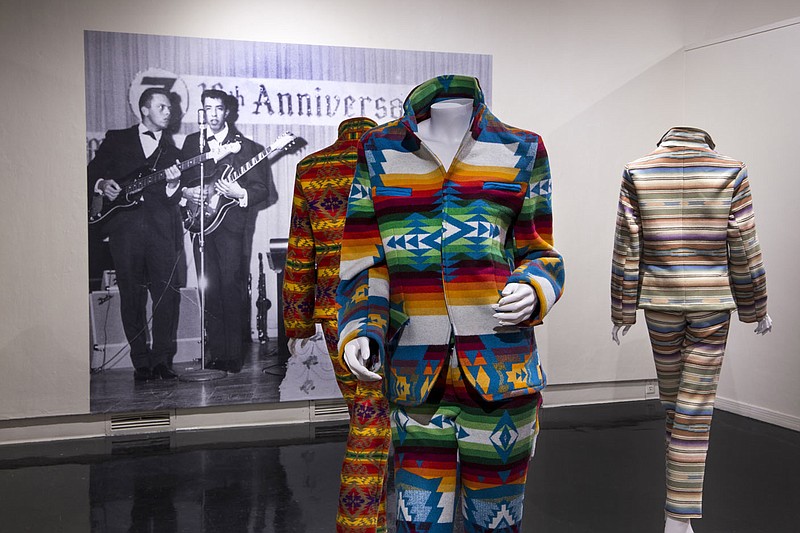In preparing for the newest temporary exhibition at the Momentary multidisciplinary arts space in Bentonville, there was a reluctance to even use the word "fashion" in the title -- though it would go on to become "In Some Form or Fashion." Organizers did not want to mislead audiences to believe it was a fashion exhibition in the traditional sense, reveals Kaitlin Garcia-Maestas, associate curator.
"Rather, these artists are, through their artwork that is sort of housed within the art world, thinking about and critiquing the fashion industry," Garcia-Maestas says, pointing to the celebratory nature of "fashion as art" often associated with clothing or textile exhibition.
The material medium connects the six artists presented in the building-wide, Momentary-organized exhibition. But so, too, do the multiple layers of meaning and critique that "start to converse with one another when they're installed side by side."
"All of the artists in the exhibition, ... are really thinking about what are the socio-cultural implications of fashion," Garcia-Maestas demonstrates. "Ideas of global consumerism, mass consumption, cycles of colonialism -- how do these elements deconstruct or reconstruct these ideas around gender, race and class?"
Some of those themes also hearken back to the Momentary's factory origins. The six contemporary, mixed-media artists included were invited to respond to the venue's industrial architecture to create site-specific and responsive works.
"It was important to me that we thought not just about what the architecture looks like today, but what was the history of the building? And how are those histories embedded in the story that we tell through our exhibition?" Garcia-Maestas says, thinking back to the exhibition's inception. "In thinking about this site as a former site for manufacturing labor, specifically, it felt like there was a nice connection to some of the ideas of mass consumption and production that are happening within the textiles included in this exhibition."
One such example is found in Pia Camil's "Skins Shirt Curtain" -- a 65-foot-long, nearly 10-foot-tall curtain constructed from T-shirts. On the back of the curtain, viewers can find tags with the garments' countries of origin while on the front, American slogans, political ads and logos paint a different portrait of consumption and labor and who might be harmed in their processes.
Likewise, Troy Montes-Michie's work truly "embraced the spirit of the exhibition," Garcia-Maestas posits. In thoughtfully approaching the architecture of the site, Montes-Michie's work feels at home in the space, she says, while reflecting an item capable of (and used to) both advertise and conceal one's race and sexuality.
"I think it's helpful for visitors to have the context of these works, but I also just hope the visitors are able to have fun and appreciate the tactile nature of all of these works," Garcia-Maestas offers. "Because it's hard to look at them and not want to touch some of them, even though you can't touch them. Wendy Red Star's feather dresses are so beautiful and so fun and vibrant. And Eric Mack's hanging textiles are so dynamic, beautiful. I hope that visitors are able to find an escape and be able to immerse themselves in textile art, because that's not something that the Momentary has had a lot of opportunity to show."
And it's a presentation Garcia-Maestas insists should be seen in person to fully appreciate the visual complexities and deeper layers on display.
"Coming out of this, sort of, pandemic digital moment, we've all gotten so accustomed to feeling like we can see and understand a work digitally," she notes. "Textiles just don't translate digitally very well. So it is a really rewarding experience to actually come and see the works in person. And then these ideas really start to click -- because we all wear clothing, right?
"We all have memories that are associated with specific textiles, colors, materials, textures, and you start to find your own relationship to the work," she adds. "So it's been interesting; most people that I talk to, their favorite installation is different. Sometimes we have exhibitions, and there are clear favorites of work in the show. But I think this show, because textiles have all these embedded memories and signifiers, people respond very differently."
Editor's Note: This is Jocelyn Murphy's last What's Up! as associate editor, although you'll see her byline on a few more stories through the end of the year. We wish her nothing but wonderful things in her new job.
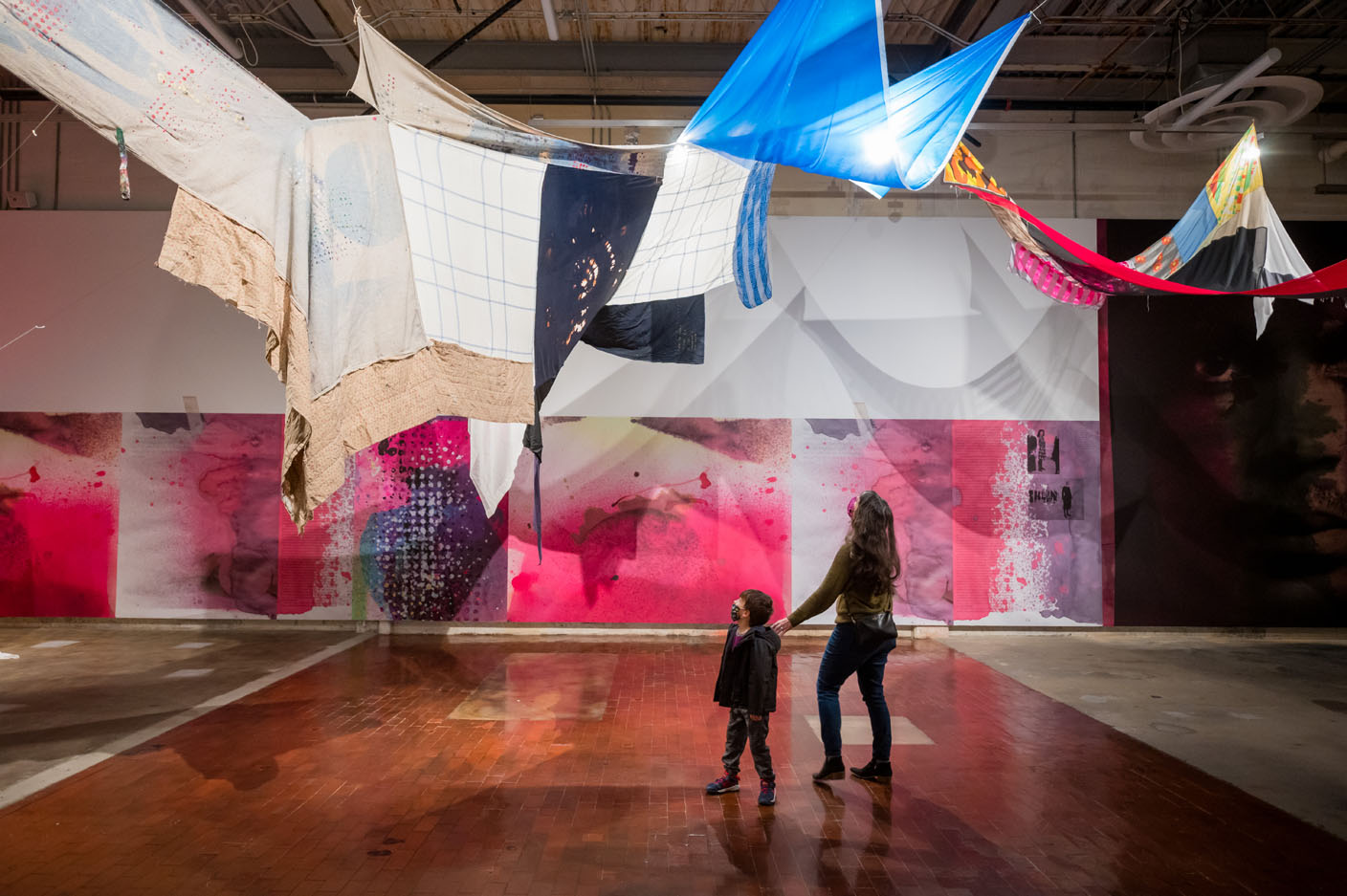 Photo by Ironside Photography / Stephen Ironside.On the cover: The Momentary’s new original temporary exhibition “In Some Form or Fashion” brings together the work of six contemporary artists to explore the cultural implications of fashion and how identities are shaped by the garments individuals purchase, wear and discard. The exhibition will be on display through March 27 at the Bentonville venue. (Courtesy Photo/Ironside Photography / Stephen Ironside, courtesy of the Momentary)
Photo by Ironside Photography / Stephen Ironside.On the cover: The Momentary’s new original temporary exhibition “In Some Form or Fashion” brings together the work of six contemporary artists to explore the cultural implications of fashion and how identities are shaped by the garments individuals purchase, wear and discard. The exhibition will be on display through March 27 at the Bentonville venue. (Courtesy Photo/Ironside Photography / Stephen Ironside, courtesy of the Momentary)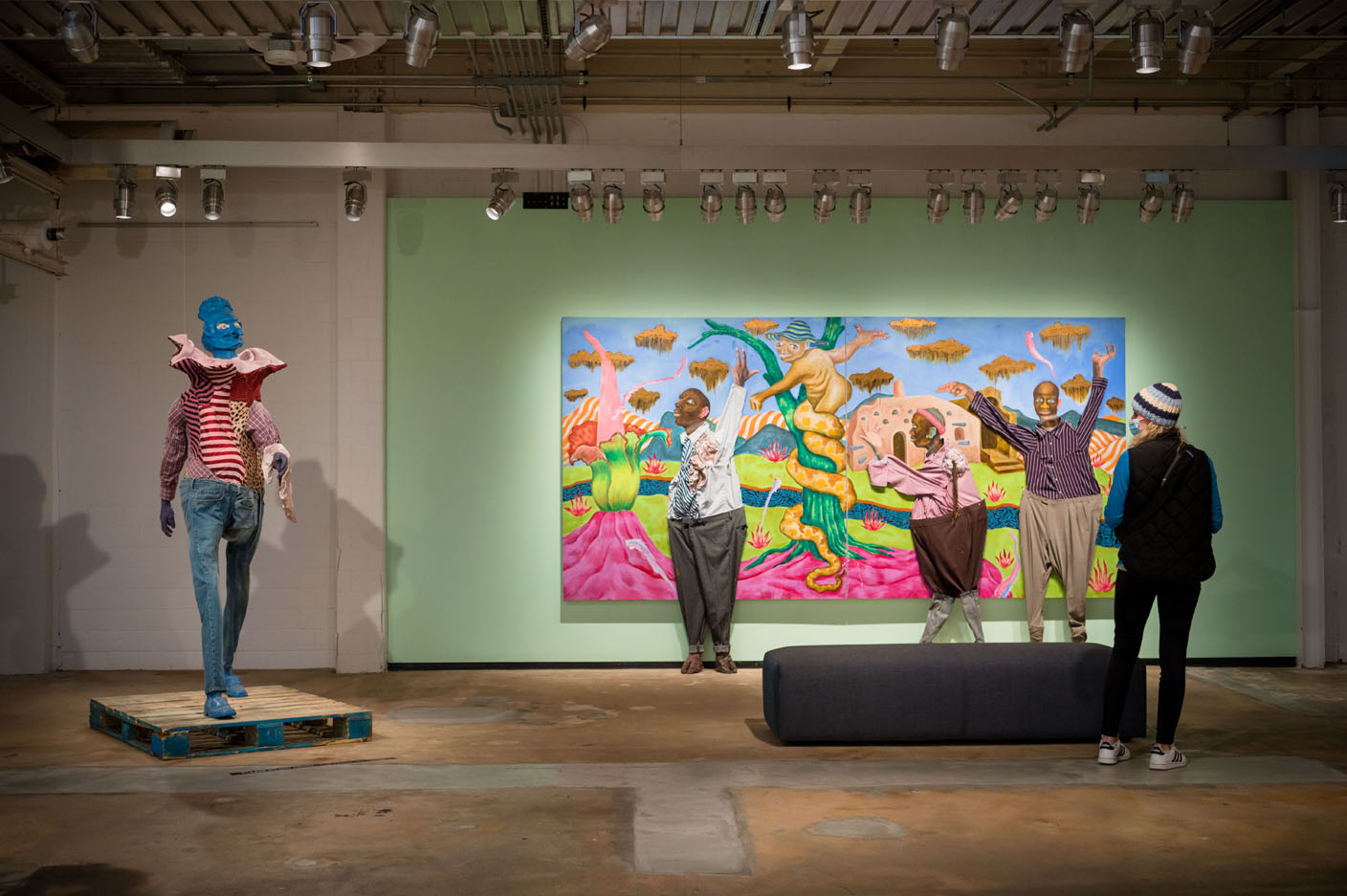 South African artist Simphiwe Ndzube use vibrant colors and playful forms to explore themes of Black subjugation, migration and beauty ideals. “These stories are stories of liberation, of celebration, of identity,” Garcia-Maestas says of Ndzube’s touches of surrealism in his work. “Simphiwe is very clear about his history growing up in the post-apartheid moment in South Africa. And his perspective as a young artist coming from South Africa, he’s really thinking about how to create these fantastical worlds that touch upon this history, but are really writing a new story and offering opportunities for hope and acceptance.” (Courtesy Photo/Ironside Photography / Stephen Ironside, courtesy of the Momentary)
South African artist Simphiwe Ndzube use vibrant colors and playful forms to explore themes of Black subjugation, migration and beauty ideals. “These stories are stories of liberation, of celebration, of identity,” Garcia-Maestas says of Ndzube’s touches of surrealism in his work. “Simphiwe is very clear about his history growing up in the post-apartheid moment in South Africa. And his perspective as a young artist coming from South Africa, he’s really thinking about how to create these fantastical worlds that touch upon this history, but are really writing a new story and offering opportunities for hope and acceptance.” (Courtesy Photo/Ironside Photography / Stephen Ironside, courtesy of the Momentary)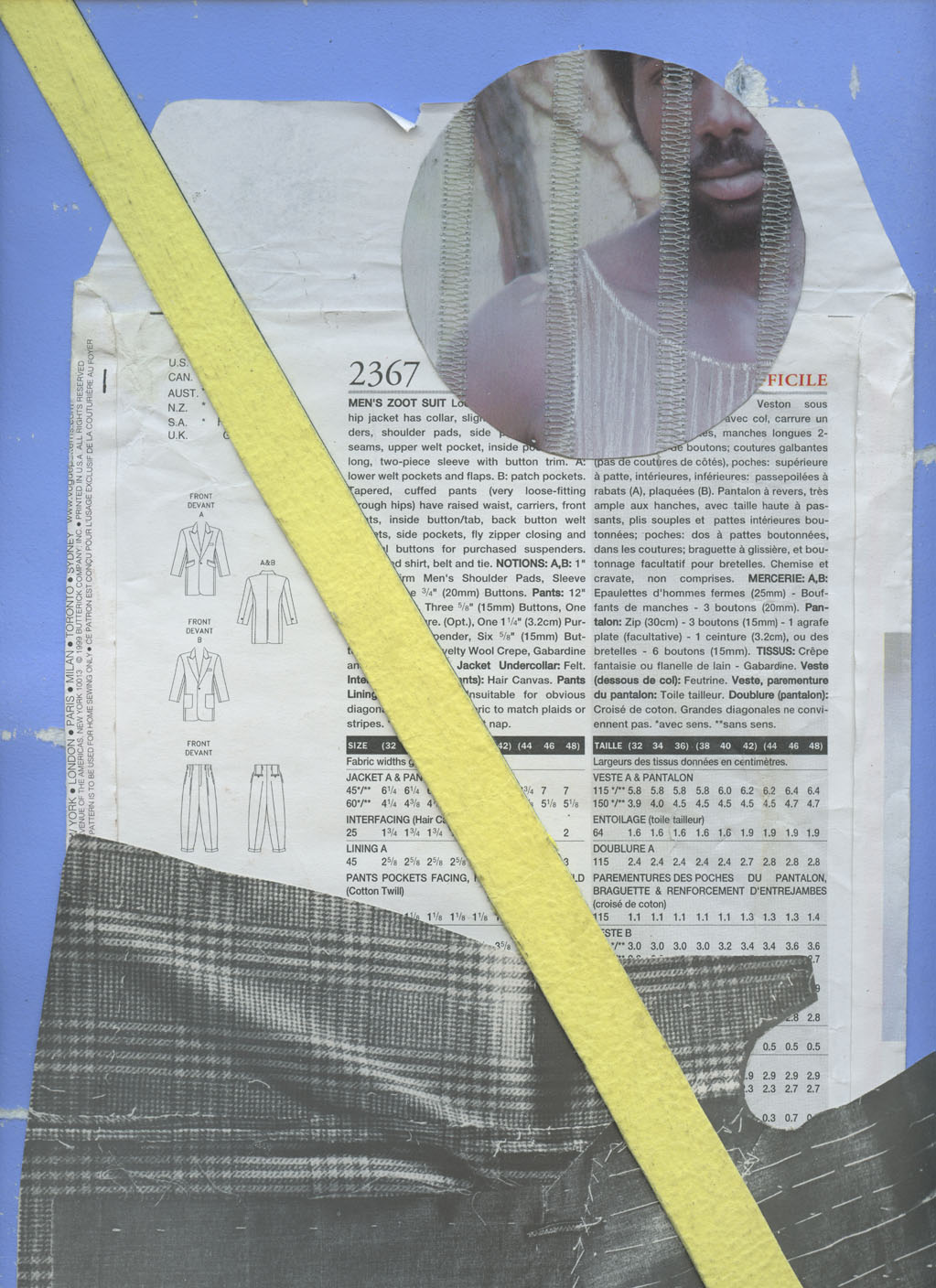 El Paso, Texas-based interdisciplinary painter and collage artist Troy Montes-Michie draws inspiration from men’s fashion, namely the zoot suit. His work engages Black consciousness, Latinx experience, immigration and queerness through assemblage and juxtaposition. Montes-Michie’s pieces in “In Some Form or Fashion” were all made specifically for the Momentary’s Gallery 3, including this assemblage “This is where I draw the line,” which takes up the entire length of one of the gallery’s concrete walls. (Courtesy Photo/Troy Montes-Michie and Company Gallery)
El Paso, Texas-based interdisciplinary painter and collage artist Troy Montes-Michie draws inspiration from men’s fashion, namely the zoot suit. His work engages Black consciousness, Latinx experience, immigration and queerness through assemblage and juxtaposition. Montes-Michie’s pieces in “In Some Form or Fashion” were all made specifically for the Momentary’s Gallery 3, including this assemblage “This is where I draw the line,” which takes up the entire length of one of the gallery’s concrete walls. (Courtesy Photo/Troy Montes-Michie and Company Gallery)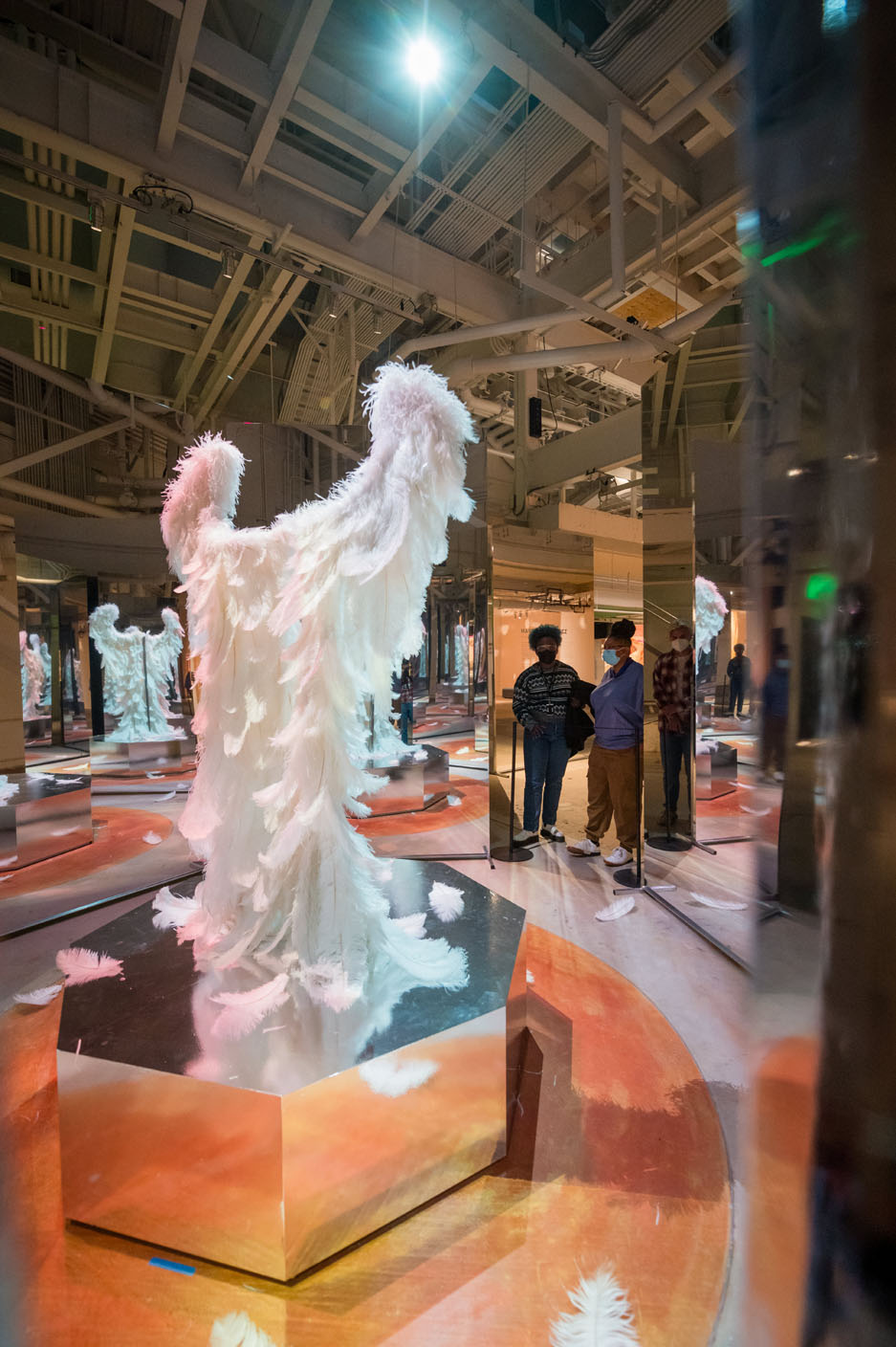 “In Some or Fashion” is really, Associate Curator Kaitlin Garcia-Maestas explains, the Momentary’s first internally organized large-scale, group exhibition that extends throughout the building. As such, Garcia-Maestas reveals it was important to her that the exhibition make connections to the building’s own history as a former site for manufacturing labor. (Courtesy Photo/Ironside Photography / Stephen Ironside, courtesy of the Momentary)
“In Some or Fashion” is really, Associate Curator Kaitlin Garcia-Maestas explains, the Momentary’s first internally organized large-scale, group exhibition that extends throughout the building. As such, Garcia-Maestas reveals it was important to her that the exhibition make connections to the building’s own history as a former site for manufacturing labor. (Courtesy Photo/Ironside Photography / Stephen Ironside, courtesy of the Momentary)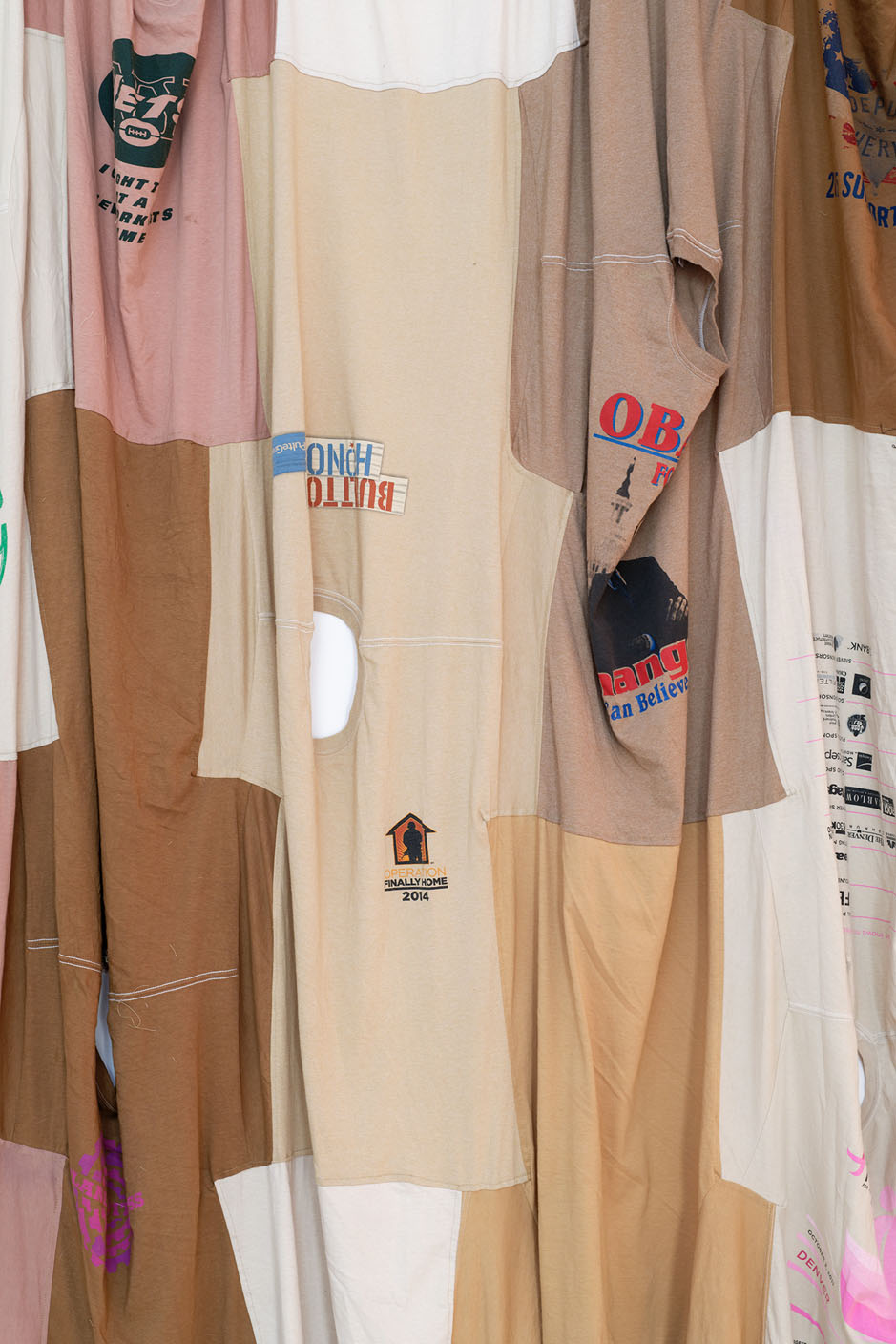 Multidisciplinary artist Pia Camil creates immersive curtains that chart the cycles of global consumption. She sources second-hand T-shirts for her work that were manufactured in Latin America, discarded in the U.S., and often smuggled back across the border into Mexico through illicit trade cycles to avoid export taxes. Camil sources them in open-air markets where these donated, disposed of and discarded garments are re-sold in Latin America. (Courtesy Photo/Pia Camil and Galerie Sultana, copyright Claire Dorn)
Multidisciplinary artist Pia Camil creates immersive curtains that chart the cycles of global consumption. She sources second-hand T-shirts for her work that were manufactured in Latin America, discarded in the U.S., and often smuggled back across the border into Mexico through illicit trade cycles to avoid export taxes. Camil sources them in open-air markets where these donated, disposed of and discarded garments are re-sold in Latin America. (Courtesy Photo/Pia Camil and Galerie Sultana, copyright Claire Dorn)
